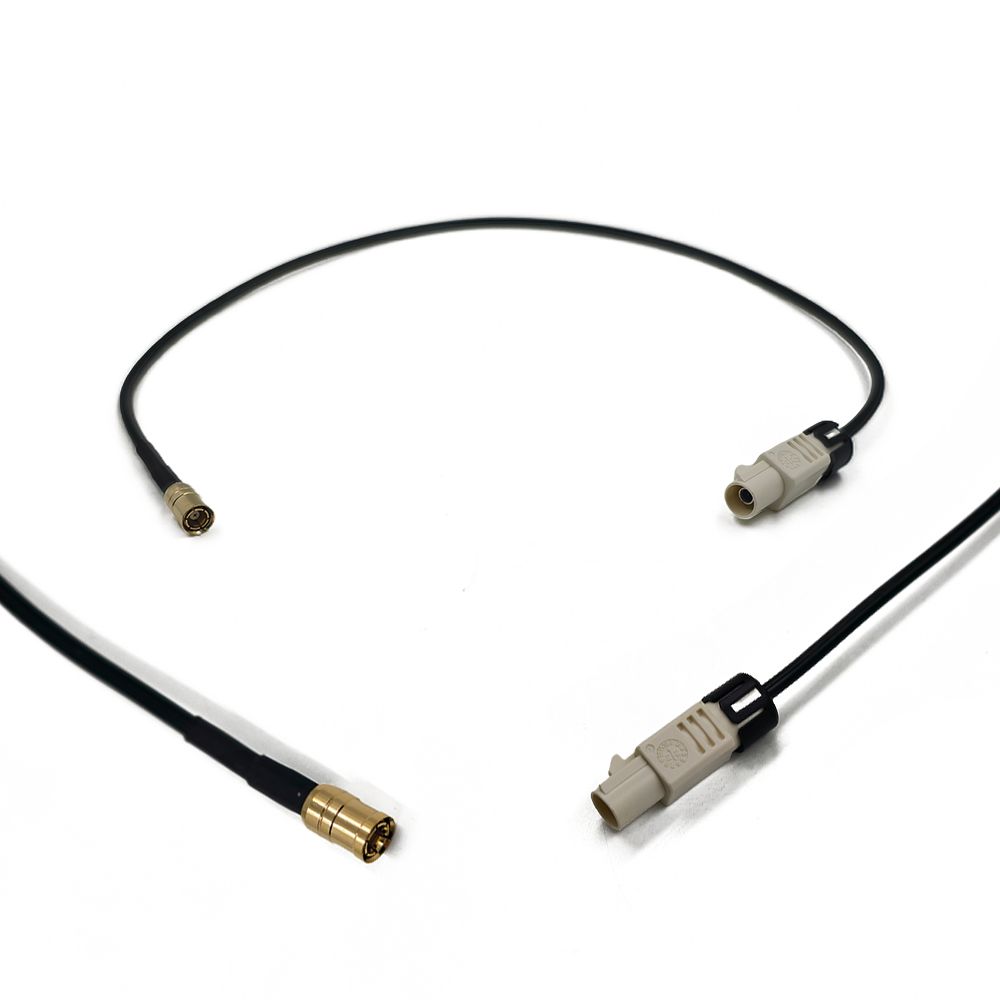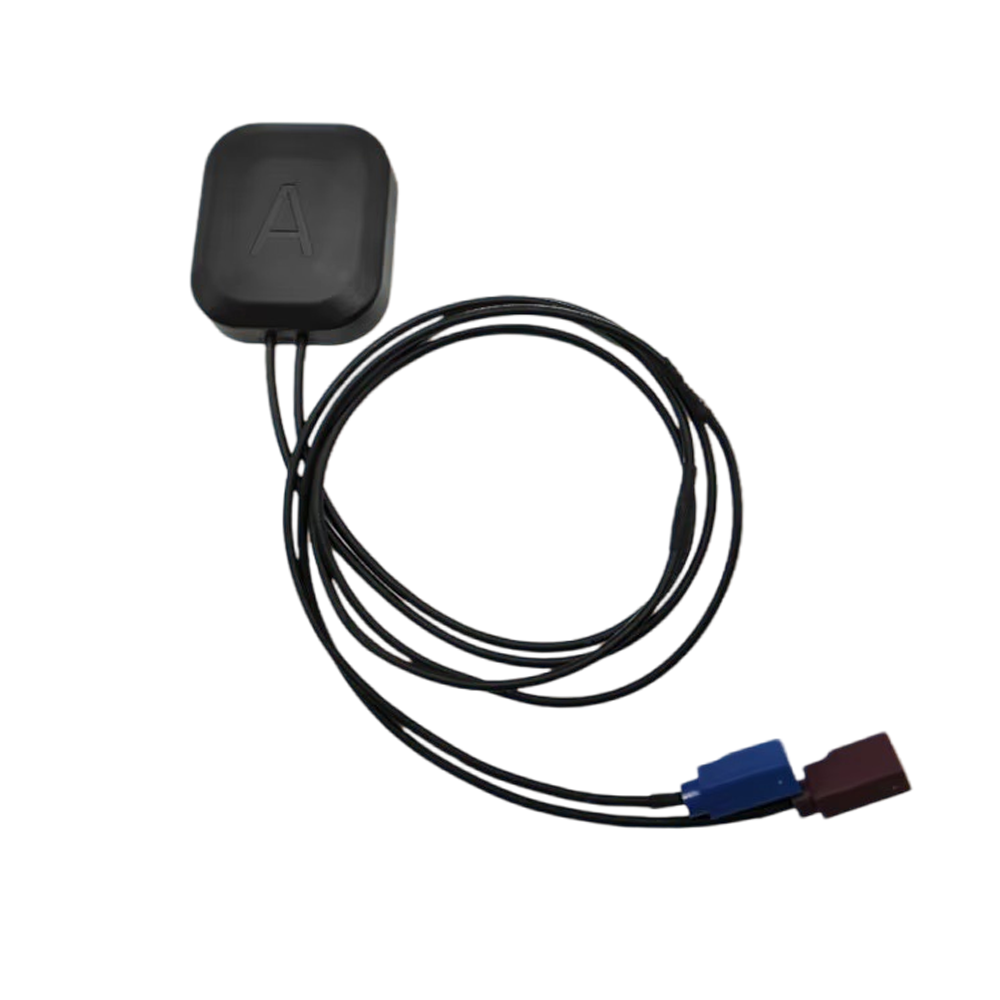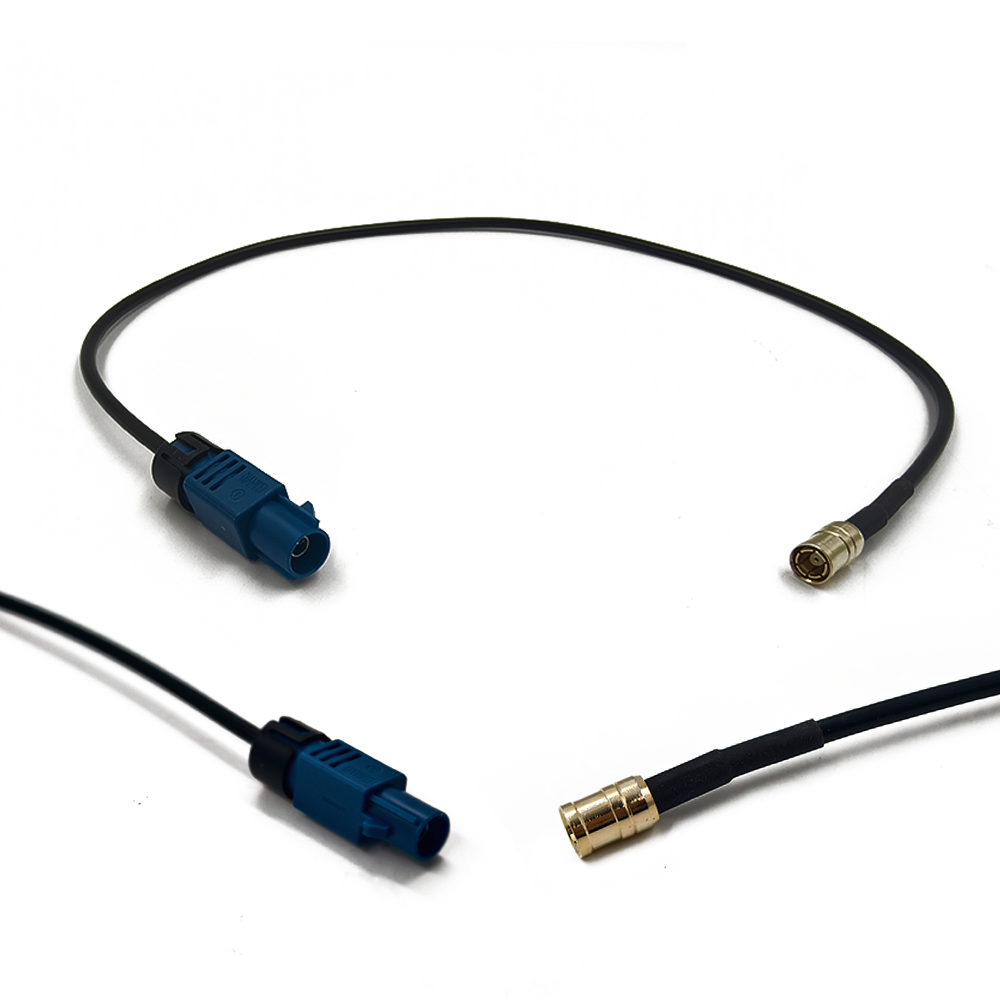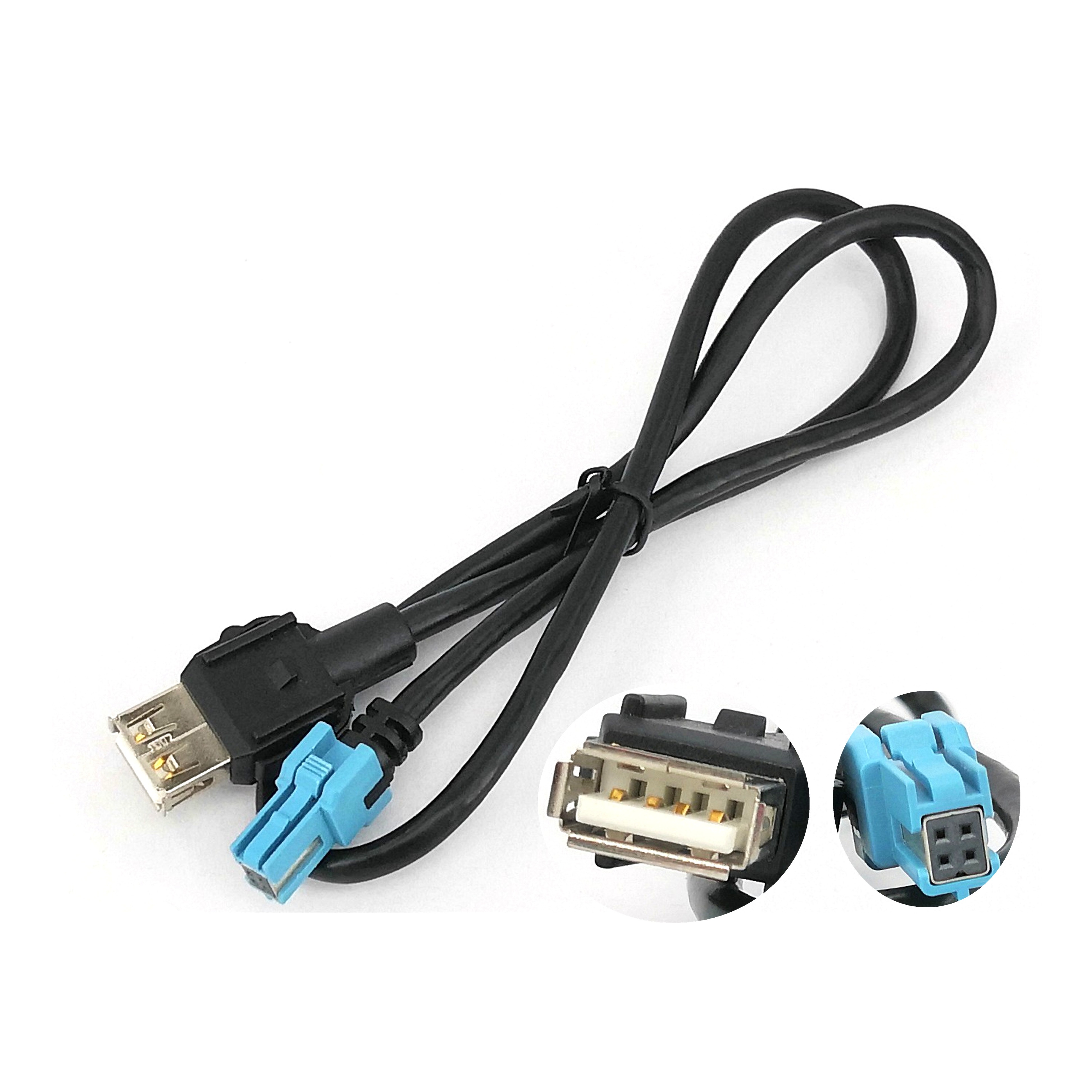Compact FAKRA Connector GNSS Antenna Modules offer a unique set of advantages that make them ideal forspace-constrained, harsh-environment applications—from automotive telematics to industrial IoT and portable tracking devices. These advantages stem from their integrated design, FAKRA compliance, and miniaturized form factor, addressing critical pain points that discrete or non-standard GNSS solutions cannot. However, they also face inherent challenges, such as performance trade-offs in ultra-compact designs and higher costs, which must be balanced against their benefits. This section explores both sides of the spectrum in detail.
Advantages
Space Efficiency for Compact Devices
The most defining advantage of these modules is their ultra-slim form factor, which makes them ideal for devices where space is a premium. With dimensions as small as 20mm x 20mm x 5mm, they can fit into tight spaces that would be inaccessible to bulkier standalone GNSS antennas—such as the dashboards of compact electric vehicles (EVs), the casings of portable asset trackers, or the enclosures of industrial sensors. For example, in a miniaturized IoT asset tracker designed to attach to small packages or tools, a compact FAKRA module occupies less than 10% of the tracker’s internal space, leaving room for other critical components like batteries, cellular modems, and sensors. This space efficiency also enables sleeker product designs: automotive manufacturers, for instance, can integrate the module into the rearview mirror or infotainment unit without compromising the vehicle’s interior aesthetics—something impossible with larger antennas.
Automotive-Grade Durability via FAKRA Compliance
FAKRA compliance is a key advantage, as it ensures the module meets the rigorous durability standards required for harsh environments. FAKRA connectors (and the modules that integrate them) are tested to withstand extreme temperatures (-40°C to 105°C), continuous vibration (up to 2000 Hz), and water/dust ingress (IP6K7/IP6K9K ratings)—qualities that make them ideal for automotive, industrial, and marine applications. For example, in a commercial truck operating on rough terrain, the module’s FAKRA connector maintains a secure, vibration-resistant connection, preventing signal loss even when the vehicle bounces over potholes or gravel. In marine IoT devices, the IP6K9K rating protects the module from saltwater spray and high-pressure washing, ensuring reliable positioning for boat tracking or buoy monitoring. This durability translates to a longer lifespan (10–15 years) compared to consumer-grade GNSS modules, reducing replacement costs and downtime for users.
Simplified Integration and Compatibility
The integrated design of these modules—combining the GNSS antenna, LNA, filter, and FAKRA connector into a single unit—simplifies installation and reduces integration complexity for device manufacturers. Unlike discrete systems, which require separate mounting of the antenna, routing of coaxial cables, and connection of multiple components, a compact FAKRA module can be installed with a single step: mating the FAKRA connector to the host device’s port and securing the module with adhesive or screws. This reduces assembly time by 50–70% compared to discrete solutions, lowering manufacturing costs for high-volume applications like automotive telematics.
FAKRA’s color-coded, keyed design further enhances compatibility. Each connector color corresponds to a specific RF application (e.g., yellow for GNSS, green for Bluetooth), eliminating the risk of incorrect mating— a common issue with non-standard connectors that can damage components or cause signal loss. For fleet operators managing mixed-vehicle fleets, this means a single module model can be used across different vehicle makes and models, as long as the host device has a FAKRA-compliant GNSS port. This standardization reduces inventory complexity and simplifies maintenance, as technicians only need to stock one module type instead of multiple discrete components.
Superior Signal Integrity and Reliability
Compact FAKRA modules are engineered to deliver consistent, high-quality GNSS signals—critical for applications that require precise positioning. The integration of the antenna, LNA, and filter into a single unit minimizes signal loss between components: in discrete systems, long coaxial cables between the antenna and LNA can cause 3–5 dB of signal loss, but in integrated modules, this loss is reduced to less than 1 dB. The LNA’s low noise figure (NF < 2 dB) ensures that weak satellite signals (e.g., from satellites low on the horizon or in urban canyons) are amplified without introducing excessive noise, while the band-pass filter blocks out-of-band interference (e.g., cellular or Wi-Fi signals) that could corrupt the GNSS data.
The FAKRA connector’s EMI shielding adds another layer of signal protection. The connector’s metal shell or conductive plastic body provides 360° shielding against electromagnetic interference from nearby components—such as the engine or infotainment system in a vehicle, or the power supply in an industrial sensor. This shielding ensures that the GNSS signal remains clean even in noisy RF environments, reducing positioning errors and improving reliability. For example, in an EV with a high-voltage battery pack (which emits EMI), the module’s EMI shielding prevents interference from distorting the GNSS signal, ensuring accurate tracking for range estimation and charging location mapping.
Multi-Constellation/Multi-Band Support for Global Reliability
Most compact FAKRA modules support multiple GNSS constellations (GPS, Galileo, BeiDou, GLONASS) and frequency bands (L1, L5, L2), making them suitable for global applications. Multi-constellation support ensures that the module can capture signals from more satellites—even in regions where a single constellation (e.g., GPS) may have limited coverage. For example, in China, where BeiDou has strong regional coverage, the module can switch to BeiDou signals if GPS visibility is poor, maintaining positioning accuracy. Multi-band support (especially L5) enhances performance in challenging conditions: the L5 band (1176.45 MHz) is less susceptible to atmospheric interference and multipath (signals reflected off buildings) than L1, making it ideal for urban environments or precision applications like automotive ADAS. This versatility means a single module can be used in global markets, reducing the need for region-specific designs and lowering development costs for manufacturers.
Challenges
Performance Trade-Offs in Ultra-Compact Designs
The biggest challenge of compact FAKRA modules is the inherent trade-off between size and GNSS performance. To achieve ultra-miniaturization, engineers must reduce the size of the antenna element—often leading to lower gain (typically 2–5 dBi, compared to 5–8 dBi for larger standalone antennas) and a narrower radiation pattern. This can reduce the module’s ability to capture weak signals in challenging environments, such as dense urban canyons or heavily forested areas. For example, a module with a 2 dBi gain may struggle to receive signals from satellites low on the horizon, leading to longer time-to-first-fix (TTFF) or occasional signal loss. While multi-constellation/multi-band support helps mitigate this, it cannot fully compensate for the gain reduction caused by a smaller antenna.
Another performance trade-off is heat dissipation. In ultra-compact modules, the LNA and other active components are packed closely together, limiting heat transfer. During prolonged operation (e.g., a vehicle’s telematics system running for 8+ hours a day), this can cause component temperatures to rise, leading to a slight increase in the LNA’s noise figure (e.g., from 1.5 dB to 2.0 dB) and reduced signal integrity. Manufacturers address this by using heat-conductive PCB substrates (e.g., Rogers 4350 with integrated copper heat sinks) or low-power LNA components, but these solutions add cost and may not eliminate the issue entirely.
Higher Cost Compared to Discrete or Non-Standard Solutions
Compact FAKRA modules are more expensive to produce than discrete GNSS components or non-standard modules— a barrier for cost-sensitive applications. The high costs stem from several factors:
Specialized Materials: High-frequency PCB substrates (e.g., Rogers 4350), gold-plated FAKRA connector pins, and EMI shielding materials are more expensive than standard components.
Precision Manufacturing: The integrated design requires high-precision assembly (e.g., mounting the LNA within 2–3mm of the antenna element) and rigorous testing (anechoic chamber RF testing, environmental durability testing), which increases production time and labor costs.
FAKRA Compliance: Licensing and testing to meet ISO 20860 standards add additional costs.
For example, a compact FAKRA module may cost \(15–\)30 per unit, compared to \(5–\)10 for a non-standard consumer-grade GNSS module. This cost difference can be prohibitive for high-volume, low-margin applications—such as budget IoT asset trackers or entry-level automotive infotainment systems—where manufacturers may opt for cheaper, less durable solutions.
Limited Customization for Niche Applications
The standardized design of compact FAKRA modules—while beneficial for compatibility—limits customization for niche applications. For example, a marine IoT device may require a module with extended saltwater resistance (beyond IP6K9K) or a specialized radiation pattern optimized for open-sea environments (where satellites are primarily overhead). A construction equipment tracker may need a module with enhanced vibration resistance (beyond 2000 Hz) to withstand the extreme shaking of excavators or bulldozers. However, most off-the-shelf compact FAKRA modules do not offer these customizations, as they are designed for broad, general-purpose use. Developing a custom module for a niche application requires significant engineering resources and minimum order quantities (MOQs)—often 10,000+ units—which is impractical for small businesses or low-volume use cases.
Compatibility Issues with Legacy Systems
Many older devices and vehicles use legacy GNSS interfaces (e.g., SMA connectors, non-standard pinouts) that are not compatible with FAKRA modules. For example, a fleet of trucks manufactured before 2010 may have telematics systems with SMA ports instead of FAKRA ports. To integrate a compact FAKRA module into these vehicles, fleet operators must use adapter cables (e.g., FAKRA-to-SMA), which introduce additional signal loss (1–2 dB) and potential points of failure (e.g., adapter connections loosening due to vibration). In some cases, the legacy system may not support the module’s multi-band capabilities (e.g., an older receiver that only processes L1 signals), rendering the module’s advanced features useless. Upgrading legacy systems to FAKRA-compliant hardware adds significant cost, making it difficult for budget-constrained users to adopt these modules.
Vulnerability to Physical Damage in Exposed Mounting
While compact FAKRA modules are durable, their small size makes them more vulnerable to physical damage when mounted in exposed locations—such as the exterior of a portable tracker or the roof of a vehicle. For example, a module mounted on the outside of a delivery package may be crushed during shipping, or a module mounted on a construction vehicle’s cab may be hit by flying debris. The module’s thin housing (0.5–1mm thick) offers less protection than the thicker enclosures of larger antennas, increasing the risk of damage to internal components like the LNA or antenna element. While some manufacturers offer reinforced housing options (e.g., aluminum-reinforced plastic), these add size and cost, undermining the module’s key advantage of compactness.




































































 Language
Language
 En
En Cn
Cn Korean
Korean

 Home >
Home > 








 18665803017 (Macro)
18665803017 (Macro)













